In the northeastern part of Honshu lies Iwate Prefecture, one of Japan’s largest regions by area.
Blessed with the bounty of the Sanriku coast, the fertile plains of the Kitakami River, and the towering Ou Mountains, Iwate has developed a food culture deeply shaped by its diverse natural environment.
From preserved foods that helped people endure long, harsh winters, to hearty dishes born from the wisdom of farmers and fishermen, local cuisine here is simple yet rich in flavor. In recent years, unique regional specialties and noodle dishes have also gained national attention.
Let us take a closer look at the taste of Iwate, a true flavor of home.
Wanko Soba (Morioka & Hanamaki)
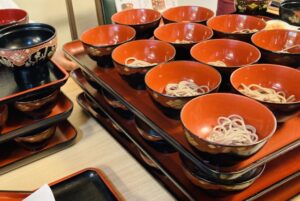
Wanko Soba, counted among Japan’s three great soba varieties
When it comes to Iwate’s signature dish, Wanko Soba immediately comes to mind.
Tiny bowls of bite-sized soba noodles are served one after another in rapid succession, creating a lively, unbroken rhythm. To signal that you’re finished, you place the lid on the bowl—marking the end of the meal.
Originally a gesture of hospitality, the cheerful, almost playful atmosphere is part of the flavor itself.
Alongside Nagano’s Togakushi soba and Shimane’s Izumo soba, Wanko Soba is celebrated as one of Japan’s “three great soba” traditions.
Morioka Reimen (Morioka)
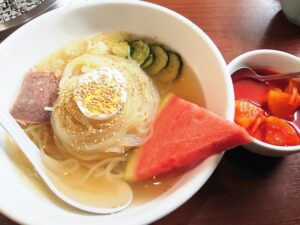
Morioka Reimen is distinguished by its unique style of being served with seasonal fruits such as watermelon, pear, or apple.
Morioka Reimen, inspired by Korean cold noodles, has evolved into a unique local specialty.
Unlike other cold noodles across Japan, this version features firm, elastic wheat-based noodles with a distinctive chew, served in a clear broth made from simmered beef bones.
Toppings typically include kimchi, roast pork, and boiled egg, with the surprising addition of seasonal fruits such as apple, pear, or even watermelon.
The sweet and tangy fruit enhances the spicy broth, creating a refreshing harmony of flavors.
First popularized as the perfect way to finish off a barbecue meal, Morioka Reimen is now enjoyed year-round and stands as one of Morioka’s culinary icons.
Jajamen (Morioka)
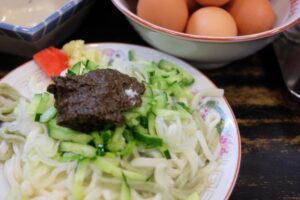
Jajamen, known along with Wanko Soba and Morioka Reimen as one of the “Three Great Noodles of Morioka”
Together with Wanko Soba and Morioka Reimen, Jajamen completes the trio known as “Morioka’s Three Great Noodles.”
Rooted in Chinese zhajiangmian, it was introduced after World War II by a chef who settled in Morioka, eventually becoming a beloved staple of local eateries.
Thick, flat noodles are topped with savory miso-based meat sauce, cucumber, and scallions, then mixed thoroughly before eating. After finishing, diners traditionally enjoy chītantan—a simple soup made by adding raw egg and broth to the remaining meat sauce on the plate.
The dish offers endless customization, with garlic, vinegar, and chili oil letting each person adjust the taste to their liking.
This versatility has made Jajamen an essential part of Morioka’s food culture.
Maesawa Beef (Oshu)
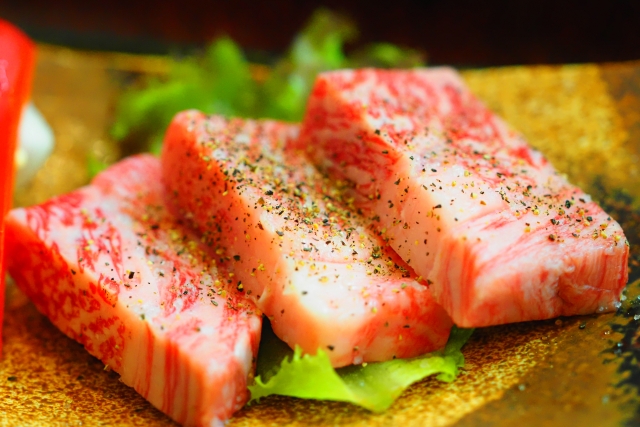
Maesawa Beef, a renowned brand of Wagyu that represents Japan
Maesawa Beef, raised in Oshu City in southern Iwate, is one of Japan’s premier wagyu brands.
Its fine marbling resembles a work of art, melting instantly at body temperature and filling the mouth with deep, rich flavor. Consistently praised at national competitions, Maesawa Beef is recognized as one of the country’s finest.
Locally, it is enjoyed in many forms—steak, sukiyaki, shabu-shabu, and yakiniku—each showcasing its exceptional umami and delicate sweetness. Popular as a luxury gift, it proudly represents Iwate’s culinary excellence.
Every animal is raised with great care, reflecting both the region’s natural abundance and the dedication of its producers.
Hittsumi (Throughout Iwate)
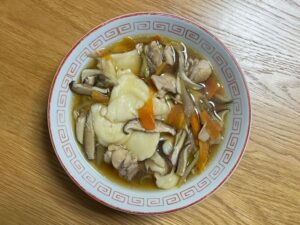
Hittsumi, a traditional home-style dish long passed down in the farming villages of Iwate
Hittsumi is a traditional farmhouse dish passed down through generations in Iwate.
Pieces of hand-torn wheat dough are dropped into a pot of simmering chicken and vegetables, creating a rustic, comforting soup.
Its name comes from the act of “pinching and pulling” the dough by hand.
Chewy in texture and infused with the flavor of the broth, Hittsumi is a warming dish, especially cherished during the cold winter months.
Though humble, it embodies the warmth of family life—a true taste of home.
Kitakami Croquette (Kitakami)
Located in southwestern Iwate, Kitakami is known as a major industrial city, but it is also famous for taro cultivation.
The local Futago taro variety is prized for its stickiness and resistance to falling apart when cooked.
This beloved crop inspired the creation of the Kitakami Croquette.
Blending the natural sweetness of taro with Kitakami beef, spinach from nearby Nishiwaga, and other local ingredients, the dish combines a crispy exterior with a soft, creamy interior.
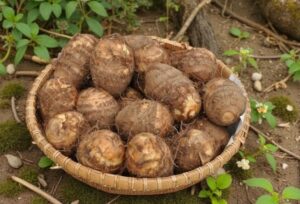
Kitakami Croquettes are made from Futago satoimo, a taro variety known for its strong stickiness and resistance to falling apart when cooked.
Although originally developed as a town revitalization project, it quickly gained popularity and is now enjoyed in restaurants and homes alike—establishing itself as a modern specialty of Kitakami.
Mamebu (Kujishi Yamagata Town)
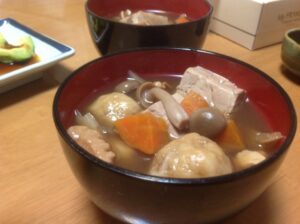
Mamebu, a traditional local dish handed down in Yamagata Town, Kuji City in northern Iwate Prefecture
Mamebu, a traditional dish from northern Iwate, is simple yet full of heart.
Small dumplings made of wheat dough are stuffed with walnuts and brown sugar, then simmered in a soy-flavored broth with vegetables and tofu. The sweet-and-savory taste reflects the resourcefulness of people living in this harsh climate.
Once essential for festive occasions, Mamebu symbolized family togetherness.
Its nationwide fame soared after being featured in the 2013 NHK morning drama Amachan, making it a well-known symbol of Iwate’s food culture.
Mochi Dishes (Throughout Iwate)
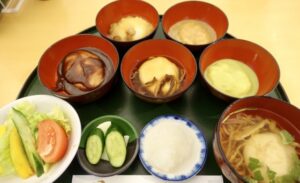
Mochi Gozen (a traditional set meal featuring assorted rice cakes)
Iwate is one of Japan’s leading regions for mochi culture.
In rural communities especially, mochi has long been central to New Year’s celebrations, weddings, funerals, and other life events—its tradition passed down for centuries.
More than just a holiday food, mochi here exists in countless forms, deeply woven into both daily life and ceremonial practices.
One notable tradition is the Mochi Honzen banquet.
At formal occasions, diners begin with grated daikon, followed by a sequence of sweet red bean mochi, savory mochi dishes, and ozoni soup, before finishing by wiping the bowls with pickled daikon.
This elaborate ritual elevates mochi beyond food into the realm of ceremony, with detailed customs varying by community.

Iwate’s food culture reflects its rugged climate, rich natural environment, and the wisdom and creativity of its people.
From lively and hearty dishes to simple home-style meals, its range is remarkably diverse.
Through food, one can glimpse the history, traditions, and way of life unique to this land—making Iwate’s cuisine a true window into the soul of the region.

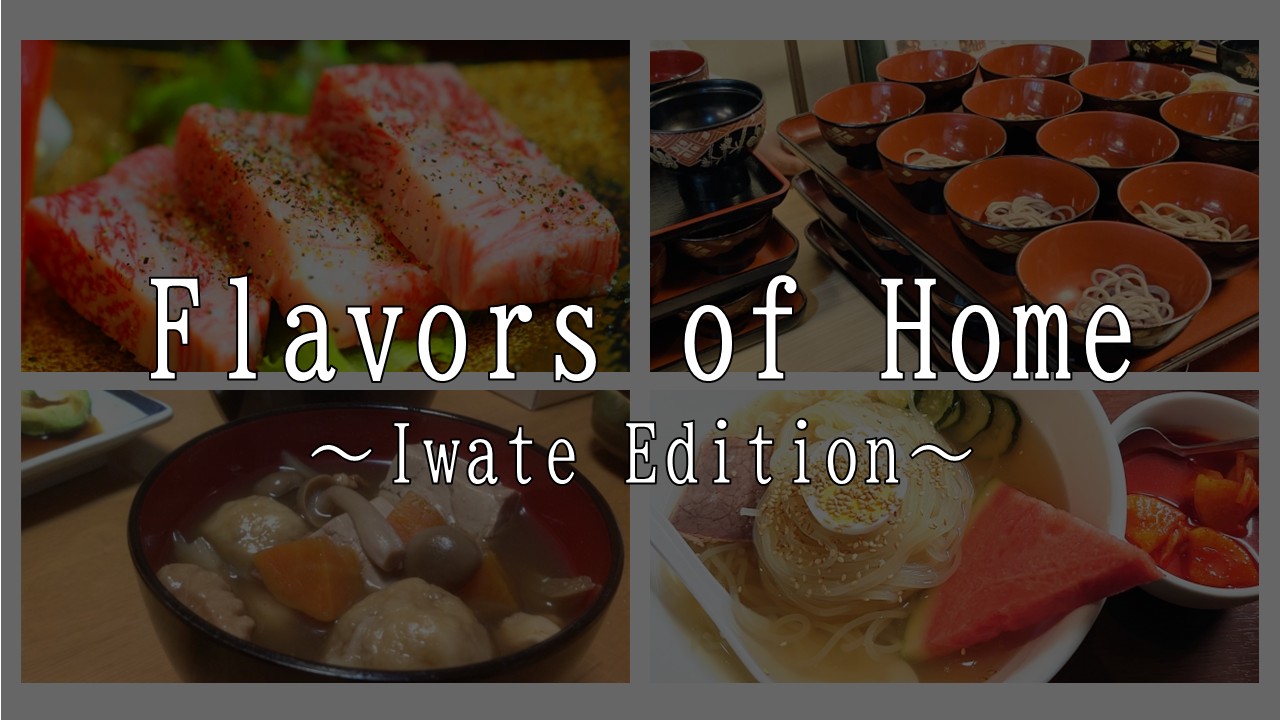



コメント